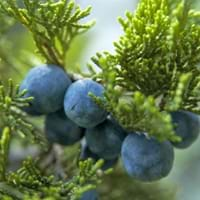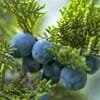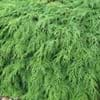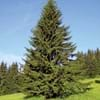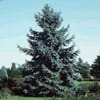Life Span
Perennial
Perennial
Type
Needled or Scaled Evergreen
Bulb or Corm or Tuber
Origin
Hybrid origin, North America
Hybrid origin
Types
Not Available
Not Available
Habitat
Deciduous forests, Rocky areas, rocky outcrops
tropical environments
USDA Hardiness Zone
3-7
8-11
AHS Heat Zone
7-1
Not Available
Sunset Zone
A2, A3, 1a, 1b, 2a, 2b, 3a, 3b, 4, 5, 6, 7, 8, 9, 10, 11, 12, 13, 14, 15, 16, 17, 18, 19, 20, 21, 22, 23, 24
21,22
Habit
Pyramidal
Clump-Forming
Flower Color
Brown, orange brown, Purple
White, Red, Light Pink
Flower Color Modifier
Bicolor
Bicolor
Fruit Color
Voilet
Green, Brown
Leaf Color in Spring
Blue
Green, Dark Green
Leaf Color in Summer
Blue Green
Light Green
Leaf Color in Fall
Blue Green
Several shades of Green
Leaf Color in Winter
Blue Green
Light Green
Leaf Shape
Scale-like imbricate
Long Linear
Plant Season
Spring, Summer, Fall, Winter
Spring, Summer, Winter
Sunlight
Full Sun, Partial Sun
Full Sun, Partial Sun
Growth Rate
Medium
Medium
Type of Soil
Loam, Sand
Loam, Sand
The pH of Soil
Neutral, Alkaline
Acidic, Neutral
Soil Drainage
Well drained
Well drained
Bloom Time
Early Spring, Mid Spring, Spring
Not Available
Tolerances
Drought
Deer resistant
Where to Plant?
Container, Ground, Pot
Container, Ground, Pot
How to Plant?
Cuttings, Seedlings
Divison, From Rhizomes, Tubers
Plant Maintenance
Medium
Low
Watering Requirements
Does not require water in summer, Keep the Soil well drained, Medium
Average Water Needs
In Summer
Lots of watering
Lots of watering
In Spring
Moderate
Moderate
In Winter
Average Water
Average Water
Soil pH
Neutral, Alkaline
Acidic, Neutral
Soil Type
Loam, Sand
Loam, Sand
Soil Drainage Capacity
Well drained
Well drained
Sun Exposure
Full Sun, Partial Sun
Full Sun, Partial Sun
Pruning
Remove damaged leaves, Remove dead branches, Remove dead leaves
Cut or pinch the stems, Remove damaged leaves, Remove dead branches, Remove dead leaves
Fertilizers
All-Purpose Liquid Fertilizer
as it is a flowering plant, use high phosphorous content fertilizer, Nitrogen, Phosphorous, Potassium, Requires high amount of nitrogen
Pests and Diseases
Red blotch
Aphids, Grasshoppers, Mealybugs, Mites, Red blotch, Slugs, Snails
Plant Tolerance
Drought
Deer resistant
Flower Petal Number
Single
Not Available
Edible Fruit
No
Not Available
Fragrant Flower
No
Not Available
Foliage Texture
Medium
Medium
Foliage Sheen
Matte
Glossy
Attracts
Not Applicable
Bees, Butterflies, Hummingbirds
Allergy
Not Available
poisonous if ingested
Aesthetic Uses
Bonsai, Hanging Basket, Showy Purposes, Used for decorating walls, fences, gates, hedges, etc.
Beautification, Bouquets, Cottage Garden, Showy Purposes
Beauty Benefits
Not Available
Not Available
Environmental Uses
Air purification
Not Available
Medicinal Uses
Antirheumatic, Hemostatic, Hepatic, Skin Diseases, Skin wounds, treating tumours
Not Available
Part of Plant Used
Flowers, Leaves, Root, Stem
Flowers
Other Uses
Decoration Purposes, Pesticide, Used as Ornamental plant
Used as Ornamental plant, Used for bedding in gardens
Used As Indoor Plant
No
Yes
Used As Outdoor Plant
Yes
Yes
Garden Design
Feature Plant, Foundation, Hedges, Mixed Border, Rock Garden, Wall, Screening, Wind Break
Container, Cutflower, Houseplant, Mixed Border, Tropical
Botanical Name
Juniperus Scopulorum
HIPPEASTRUM 'Picotee'
Common Name
Rocky Mountain Juniper, Wichita Blue Juniper
Florist Amaryllis, Hippeastrum, Picotee Hippeastrum
In Hindi
Wichita Blue Juniper
HIPPEASTRUM
In German
Wichita Blue Juniper
HIPPEASTRUM
In French
Wichita Blue Juniper
HIPPEASTRUM
In Spanish
Wichita Blue Juniper
Hippeastrum
In Greek
Wichita Blue Juniper
Hippeastrum
In Portuguese
Wichita Blue Juniper
HIPPEASTRUM
In Polish
Wichita Blue Juniper
Hippeastrum
In Latin
Wichita Blue Juniper
Hippeastrum
Phylum
Pinophyta
Magnoliophyta
Class
Pinopsida
Magnoliopsida
Order
Pinales
Asparagales
Family
Cupressaceae
Amaryllidaceae
Genus
Juniperus
Amaryllis
Clade
Not Available
Angiosperms, Monocots
Tribe
Not Available
Not Available
Subfamily
Cupressoideae
Amaryllidoideae
Season and Care of Wichita Blue Juniper and Hippeastrum
Season and care of Wichita Blue Juniper and Hippeastrum is important to know. While considering everything about Wichita Blue Juniper and Hippeastrum Care, growing season is an essential factor. Wichita Blue Juniper season is Spring, Summer, Fall and Winter and Hippeastrum season is Spring, Summer, Fall and Winter. The type of soil for Wichita Blue Juniper is Loam, Sand and for Hippeastrum is Loam, Sand while the PH of soil for Wichita Blue Juniper is Neutral, Alkaline and for Hippeastrum is Acidic, Neutral.
Wichita Blue Juniper and Hippeastrum Physical Information
Wichita Blue Juniper and Hippeastrum physical information is very important for comparison. Wichita Blue Juniper height is 300.00 cm and width 180.00 cm whereas Hippeastrum height is 38.10 cm and width 30.10 cm. The color specification of Wichita Blue Juniper and Hippeastrum are as follows:
Wichita Blue Juniper flower color: Brown, orange brown and Purple
Wichita Blue Juniper leaf color: Blue
Hippeastrum flower color: White, Red and Light Pink
- Hippeastrum leaf color: Green and Dark Green
Care of Wichita Blue Juniper and Hippeastrum
Care of Wichita Blue Juniper and Hippeastrum include pruning, fertilizers, watering etc. Wichita Blue Juniper pruning is done Remove damaged leaves, Remove dead branches and Remove dead leaves and Hippeastrum pruning is done Cut or pinch the stems, Remove damaged leaves, Remove dead branches and Remove dead leaves. In summer Wichita Blue Juniper needs Lots of watering and in winter, it needs Average Water. Whereas, in summer Hippeastrum needs Lots of watering and in winter, it needs Average Water.
